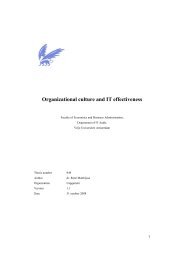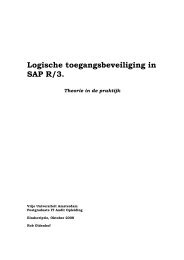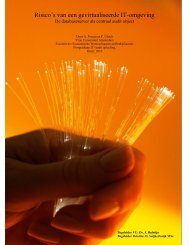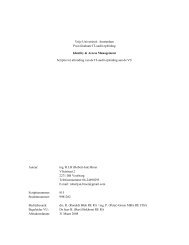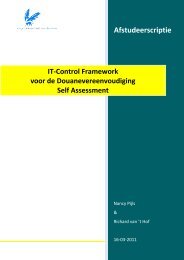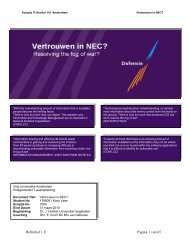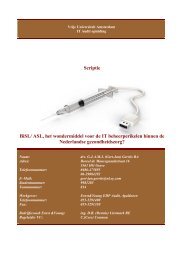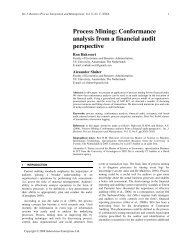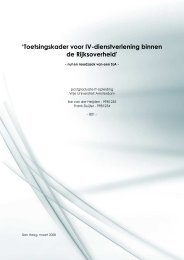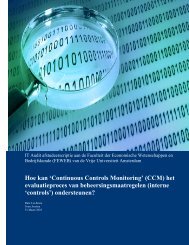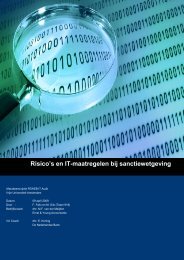Usability and Security
Usability and Security - Vurore
Usability and Security - Vurore
Create successful ePaper yourself
Turn your PDF publications into a flip-book with our unique Google optimized e-Paper software.
making it easier <strong>and</strong> more efficient. Single Sign On (SSO) describes the ability to use one set ofcredentials, an ID <strong>and</strong> password or a passcode for example, to authenticate <strong>and</strong> access information across asystem, application <strong>and</strong> even organizational boundaries35. Even biometric security devices allow theconcept of single sign-on to extend to the physical layer. A person would only have to enroll once to lethis or her biometric characteristics give access to every door, computer, or application that he or she needsaccess to 42 .6 ConclusionIn this thesis we have described the major types of authentication mechanisms, how <strong>and</strong> why theseauthentication mechanism are necessary <strong>and</strong> some of the usability issues associated with each. We haveseen that usability <strong>and</strong> security have many different definitions, each defined in different ways. Thecomponents or aspects of which they consist are highly dependant of what is considered to be useful forthe author or organization. In this chapter we will provide answers to the research questions as defined inparagraph 1.2.What is usability?We define usability as: “The extent to which a product can be used by specified users to achieve specifiedgoals with effectiveness, efficiency <strong>and</strong> satisfaction in a specified context of use”. Thus, usability refers tousers who interact with information systems or devices with to goal to obtain access to systems orbuildings as efficient, effective <strong>and</strong> satisfied as possible.What is security?<strong>Security</strong> is the “preservation of confidentiality, integrity <strong>and</strong> availability of information”. Thus, securityrelates to the protection of information <strong>and</strong> information systems from unauthorized individuals in order tosafeguard the accuracy <strong>and</strong> completeness of the information <strong>and</strong> it being accessible <strong>and</strong> usable upondem<strong>and</strong>.What is the relationship between usability <strong>and</strong> security?When looked back at the types of authentication mechanisms discussed in this thesis we are able toconclude that each mechanism has its own strengths <strong>and</strong> weaknesses. We determined that the relationshipbetween usability <strong>and</strong> security of authentication mechanisms exist <strong>and</strong> that it’s possible to have a balancedlevel between usability <strong>and</strong> security.How will the relationship between usability <strong>and</strong> security develop in the coming years?We believe the trend of combining secure computing <strong>and</strong> ease of use <strong>and</strong> quality will not go away <strong>and</strong>grow even more in the future. Two-factor <strong>and</strong> the three-factor authentication for instance provide bettersecurity, without decreasing the level of usability. We further believe that a combination of technologies<strong>and</strong> mechanisms securely linked will result in stronger authentication. Access control techniques such asthe single sign on <strong>and</strong> the use of Radio-frequency identification within organizations will continue todevelop <strong>and</strong> increase in the next few years.25




